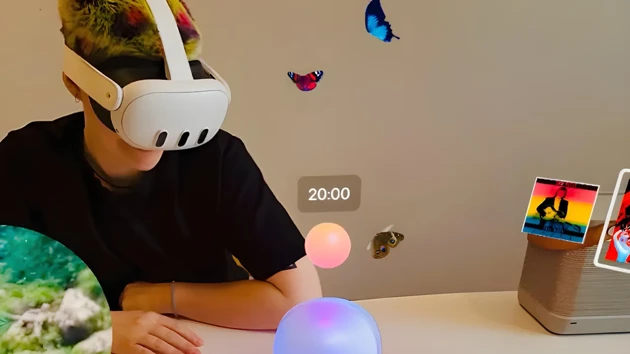Presence – Spatial computing for living in the moment
This project explores how integration between virtual and physical spaces could lead towards more meaningful embodiment of software in the world. A virtual representation of the physical space including geometry, lighting, semantics and networking is used to simulate virtual objects that interact with the physical world in terms of physics, light, occlusion and controlling. While physical objects acknowledge our existence fully, virtual objects occupy mostly our mental space. This leads to a disconnection where mental presence in the virtual space diminishes mental presence in the physical one. The goal is to achieve presence in a blended space where virtuality and physicality mix to leverage advantages of both. This should lead to physical objects that are more fluid and accessible in their nature and virtual objects that satisfy our senses and acknowledge us as physical beings.
Project Information
How can spatial computing lead towards interaction with meaningful augmentation of our minds and uninterrupted presence?
Virtuality becomes more prevalent in our perceivable reality. Many objects of daily use are becoming more virtual. They accelerate our problem-solving capabilities and provide us with fast and targeted information access. Interface abstractions and metaphors like windows, closed applications and mouse cursors were set in a time when computers used to be far less powerful than they are today. While practical those paradigms lead to separation of presence in virtual and physical space. This separation creates a binary state of focus, where being engaged with one space creates an interference of presence in the other space. Spatial interfaces, compared to flat software front ends, are more directly coupled with the senses. Hardware like mixed-reality headsets, display outputs arranged in space and spatial audio, makes software experienceable un-bound to a physical medium. Coupling with the senses provides a common perceptual space, where virtual and physical can affect each other in terms of interaction, physics, light and controlling.
This work is an exploration of how this blend of realities could lead towards a world where engaging with virtual and physical spaces can happen on a common stage and does not enforce presence in one space.
Approach
Throughout the process, building sketches and prototypes was used as a tool for gaining knowledge about experiential and functional value of given technologies. Those interventions were exposed to people to gather insight on their usefulness and desirability.
Results
The outcome is three prototypes that incorporate most of the tacit knowledge synthesized throughout the process. They illustrate how through spatial computing a blended space can be created where physical objects are more fluid and approachable in their nature and virtual objects satisfy our senses and acknowledge us as physical beings.




A Portal into Memories
A Lamp between Virtuality & Physicality
A Music Player adapting to Intent & Space






